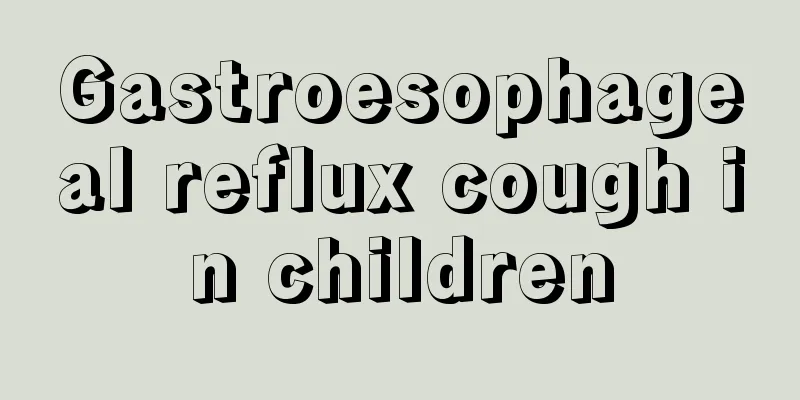The jaundice will go away in a few days.

|
Generally speaking, the physiological jaundice of newborns will gradually disappear within two weeks at the latest. If it still does not subside at this time, it means that the child has pathological jaundice. At this time, timely examination and enhanced care are needed. The child should drink some warm water appropriately. Certain medications can be used for treatment. In addition, the effect of blue light irradiation therapy is also relatively good. Let us learn about this aspect.
The jaundice will go away in a few days. Neonatal physiological jaundice: Newborns begin to develop jaundice 2-3 days after birth, which is most obvious after 4-5 days and disappears naturally in 7-14 days. The general condition is good without adverse reactions. This is called "physiological jaundice." Because premature infants have more immature liver function, jaundice will appear later, around the 3rd or 4th day, and will last longer. Jaundice in premature infants can last for 14 days or longer. Neonatal breast milk jaundice: Jaundice starts 4-7 days after birth and lasts for about 2 months. It is mainly characterized by increased unconjugated bilirubin and has no clinical symptoms.Neonatal pathological jaundice: Jaundice appears early, within 24 hours after birth. Jaundice is persistent. It may persist or even worsen 2-3 weeks after birth, or it may improve and then worsen. Severe jaundice may be golden yellow or spread all over the body, with obvious jaundice on the palms and soles, or serum bilirubin greater than 12-15 mg/L. Those with anemia or lighter stool color. Those with symptoms such as abnormal body temperature, poor appetite, vomiting, etc. If it is physiological jaundice, no treatment is needed. If it is pathological jaundice, the main treatment method is blue light exposure, so you must go to the hospital's pediatric department for treatment and retest transcutaneous bilirubin to understand the treatment effect. Regardless of the cause, pathological jaundice can cause kernicterus in severe cases, which has a poor prognosis. In addition to causing damage to the nervous system, severe cases can even cause death.
Characteristics of neonatal jaundice Newborn jaundice may be physiological or pathological. Although both manifest as jaundice, there are differences between the two, which can be identified by the following characteristics. Neonatal physiological jaundice is generally not deep and has the following characteristics: 1. Jaundice usually begins to appear 2-3 days after birth. 2. Jaundice gradually worsens, reaching a peak on the 4th to 6th day, and then gradually subsides. 3. For full-term newborns, jaundice generally disappears within 2 weeks after birth, and for premature babies, jaundice generally disappears within 3 weeks after birth. 4. The degree of jaundice is generally not severe, the skin color is light yellow, and jaundice is often limited to the face and upper body. During jaundice, the child's general condition is good, with normal body temperature, normal appetite, normal color of urine and feces, and normal growth and development. 5. The serum bilirubin level exceeds the normal level by 2 mg/dl, but is less than 12 mg/dl. If your child's jaundice falls into this category, parents don't need to worry. |
<<: How much can blue light reduce jaundice in one day
>>: Normal value of jaundice in 32-day-old baby
Recommend
How to relieve itchy red bumps on baby's feet
When red bumps grow on the baby's feet, paren...
How to treat black lips in children
It is not uncommon for children to have black lip...
What does earwax look like in newborns?
Many newborns have a lot of earwax after they are...
What should I do if my baby doesn’t sleep well?
I believe that many young mothers have this probl...
What are the symptoms of respiratory tract infection in children?
Infants and young children have relatively poor i...
How long does it take for a child's sinusitis to heal?
Most children suffer from rhinitis because they d...
What can children eat to grow taller?
I believe that when we were young, every time we ...
How to deal with heat rash on baby's face
Heat rash, commonly known as prickly heat, is cau...
What is the normal body temperature for a 6 year old child?
Children having a fever is a very common phenomen...
What to do if children have a cold, stuffy nose or runny nose
When children have a cold, many parents will be p...
What should I pay attention to when caring for an eight-month-old baby?
For a family, the birth of a baby not only adds j...
How to treat green mucus in baby's stool
It is a very serious condition if the baby's ...
Reasons why children bite their nails
We should see some children have the habit of bit...
What should I do if my child’s face turns red due to allergies?
Children's faces are often allergic. At this ...
What happens when children cough while sleeping?
Many children sometimes cough when they sleep at ...









